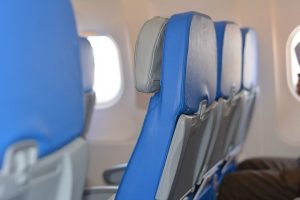 Commercial airplanes are designed with a heating system that warms the cabin to provide a comfortable environment for passengers. When an airplane begins to ascend, its heating system will typically engage. It will expel warm air out the vents and into the cabin, thereby raising the cabin temperature. Airplanes, however, don’t use the same type of heating system as cars, trucks and other roadworthy vehicles. Rather, they are designed a special type of heating system.
Commercial airplanes are designed with a heating system that warms the cabin to provide a comfortable environment for passengers. When an airplane begins to ascend, its heating system will typically engage. It will expel warm air out the vents and into the cabin, thereby raising the cabin temperature. Airplanes, however, don’t use the same type of heating system as cars, trucks and other roadworthy vehicles. Rather, they are designed a special type of heating system.
An Introduction to Cabin Heating
Although there are exceptions, most commercial airplanes generate cabin heat using a device known as a combustion heater. A combustion heater is essentially a furnace that uses the same fuel as an airplane’s engines. Some of the fuel is diverted from the engine’s storage tank to its combustion heater where it’s burned to generate heat.
Combustion heaters feature a pilot light. When fuel is pumped into them, they create a flame within a sealed metal housing unit. A fan will then blow air over the combustion heater. Before reaching the combustion heater, the air will be cold. As it travels over the combustion heater, though, the air will pick up heat. It will absorb the combustion heater’s thermal energy, thus generating hot air that’s expelled into the airplane’s cabin.
While most airplanes use a combustion heater, some of them use an electric heating system. Electric heating systems work in a similar way, except they are powered by electricity. They pass electricity through a heating element to generate heat, which is then picked up by the fan. Electric heating systems aren’t as powerful as combustion heaters, but some airplanes still use them.
Why Cabin Heating Is Important
Cabin heating is important because of the high altitudes at which airplanes fly. At cruising altitude, most commercial airplanes are about 31,000 to 38,000 feet above sea level. The temperature at this altitude, of course, is much lower than that of the ground temperature. It may be anywhere from minus 40 to minus 70 degrees Fahrenheit outside of an airplane once the airplane has reached cruising altitude.
If airplanes didn’t have heated cabins, it would create an uncomfortable or even dangerous flight experience for passengers. While on the ground, an airplane’s cabin may not be particularly cold. But as it ascends and reaches cruising altitude, the cabin will become significantly cooler — potentially to the point of causing hypothermia. Therefore, all airplanes are designed with a heating system to warm the cabin.



